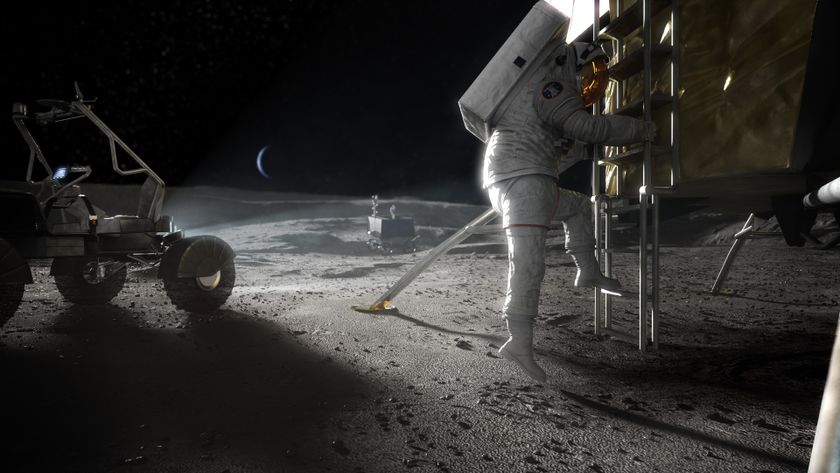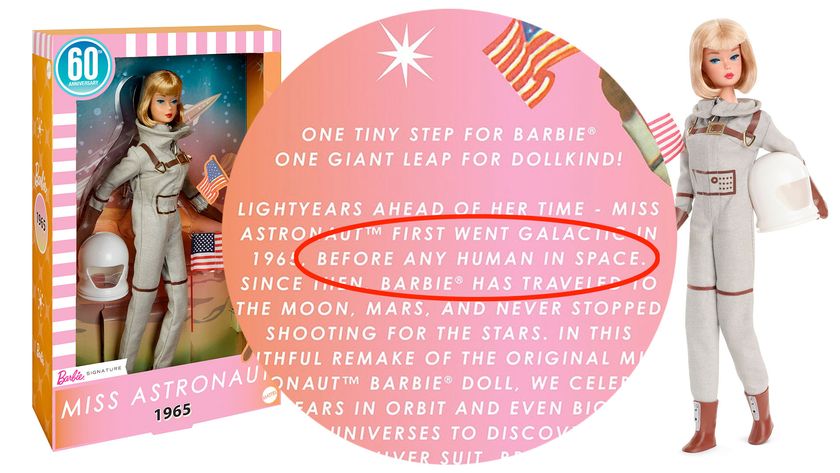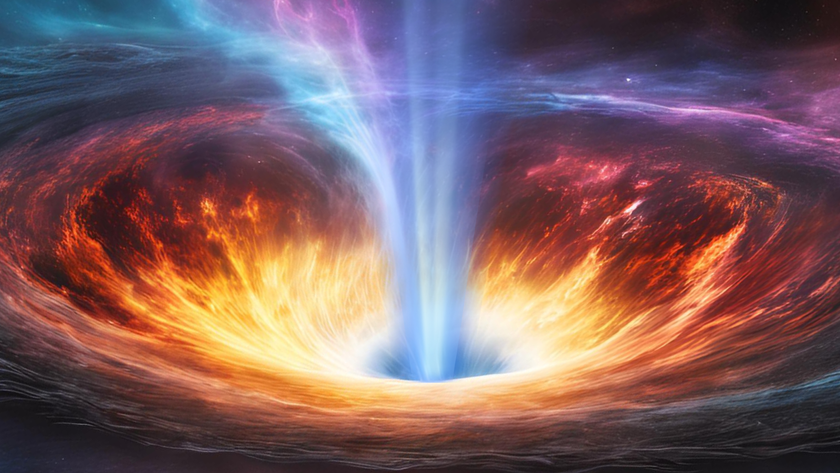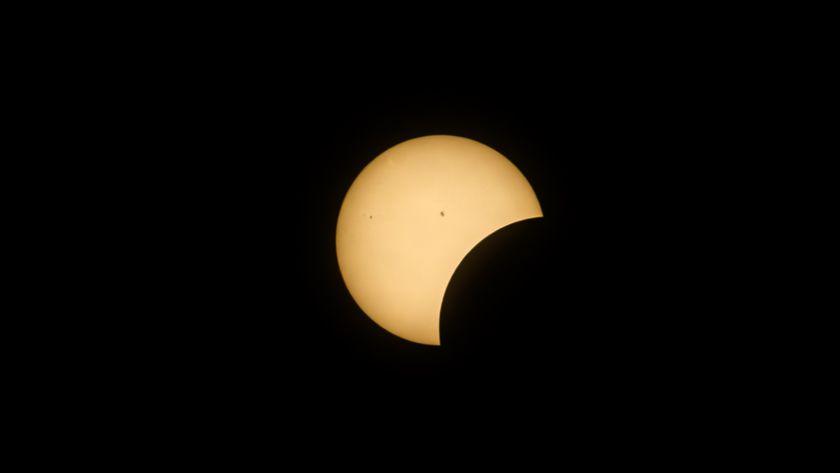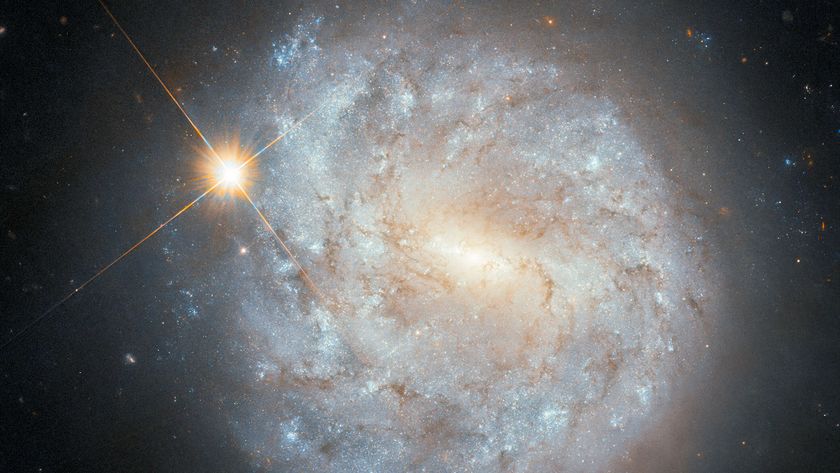Shock Absorber Plan Set for NASA's New Rocket
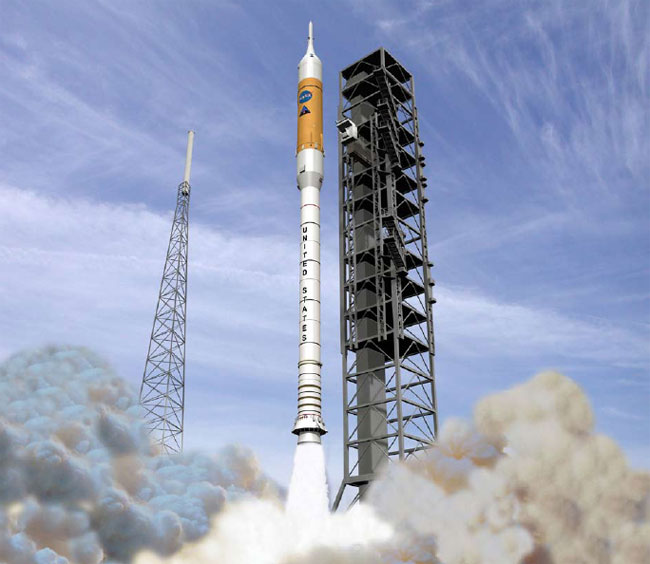
NASAengineers have come up with a dual shock absorber solution to the problem ofexcessive vibrations with the new Ares I rocket that will launch the agency?sOrion space shuttle replacement.
Twodifferent systems at the top and bottom of the newrocket?s first stage should reduce the booster?s peak vibrations duringflight to what engineers described as a few-seconds-long ?jackhammer effect.?
Therecommended shock absorber system includes a spring and damper system betweenthe Ares I booster?s first and second stages, as well as a set of 16spring-mounted weights in the aft skirt at the bottom of the first stage.
?It?s a lotlike the shock absorbers on your car,? said Steve Cook, Ares project manager atNASA?s Marshall Space Flight Center in Huntsville, Ala., in a Tuesdayteleconference. ?It isolates the vibrations just traveling through thestructure, all the way up to the seat.?
Without theupgrade, an Ares I rocket and its astronaut crew would be subjectedto shaking forces of up to five or six times Earth?s gravity (5 to 6 Gs),or about twice the force experienced by shuttle astronauts during launch,according to NASA?s early analysis. But with the shock absorbers in place,vibrations in the Ares 1 rocket should be limited to about 0.25 Gs, orone-fourth the force of Earth?s gravity, NASA engineers said.
The peakshaking should last just a few seconds near the 115-second mark just afterliftoff, said Cook, who sat in a chair-based simulation of the vibration in aNASA test. He compared it to driving a car on the bumpy shoulder of a highway.
?It reallydoesn?t physically bother you,? Cook said. ?It?s just kind of a highvibration.?
Get the Space.com Newsletter
Breaking space news, the latest updates on rocket launches, skywatching events and more!
A shakyhurdle
Thevibration issue, one of the top engineering hurdles for NASA?sAres I rocket, stemmed from a thrust oscillation in the launch vehicle?ssolid rocket booster-derived first stage. Thrust oscillation is a commonphenomenon in solid propellant rockets, which burn from the inside out allowinggases to swirl in the interior until they resonate the entire structure like anorgan pipe.
The mainconcern centered on astronaut performance during an Ares I launch, said GarryLyles, NASA?s associate director for technical management at the Marshall SpaceFlight Center in Huntsville, Ala. The higher vibrations were not a crew healthconcern, but could prevent astronauts from reading instrument panels orflipping switches precisely due to blurry vision.
?What wewant to make sure of is that we don?t get into a situation that would leaveaftereffects with the crew,? Lyles added. ?We want them to feel good after[spacecraft] separation.?
The plannedshock absorbing system?s passive spring and damper component is designed to sitat the top of the first stage and reduce vibrations from thrust oscillationsfrom a peak 6 Gs to about 1 G. The addition of 16 tuned mass absorbers,cylindrical shock absorbers that use motors to sense vibrations and nullifythem using spring-mounted weights, would further limit the shaking to about0.25 Gs, engineers said.
Altogether,the added equipment would reduce the lift capacity of the Ares I rocket?s firststage by up to 1,400 pounds (625 kg), though the booster segment currently hasa margin of about 8,000 pounds (3,628 kg) to work with, Cook said.
The firststage of NASA?s Ares I rocket will use a five-segment solid rocket booster, onesegment longer that the twin four-segment versions used on U.S. space shuttlestoday. The second stage relies on liquid propellant to boost theOrion capsule into orbit.
Engineerswill attach sensors to the solid rocket boosters and astronaut seats onupcoming shuttle missions to better understand the amount of vibrationspaceflyers are currently subjected to on the way up into space, Lyles said.
Meanwhile,Ares I rocket engineers will turn their attention to other details with theproject.
?There?snothing on our risk list that is what I would call a showstopper or a majorissue that we can?t deal with,? Cook said.
- Final Space Shuttle Missions Slated
- Video: NASA's Constellation Journey Begins - Part 1, Part 2
- Video: Back to the Moon with NASA's Constellation
Join our Space Forums to keep talking space on the latest missions, night sky and more! And if you have a news tip, correction or comment, let us know at: community@space.com.

Tariq is the Editor-in-Chief of Space.com and joined the team in 2001, first as an intern and staff writer, and later as an editor. He covers human spaceflight, exploration and space science, as well as skywatching and entertainment. He became Space.com's Managing Editor in 2009 and Editor-in-Chief in 2019. Before joining Space.com, Tariq was a staff reporter for The Los Angeles Times covering education and city beats in La Habra, Fullerton and Huntington Beach. In October 2022, Tariq received the Harry Kolcum Award for excellence in space reporting from the National Space Club Florida Committee. He is also an Eagle Scout (yes, he has the Space Exploration merit badge) and went to Space Camp four times as a kid and a fifth time as an adult. He has journalism degrees from the University of Southern California and New York University. You can find Tariq at Space.com and as the co-host to the This Week In Space podcast with space historian Rod Pyle on the TWiT network. To see his latest project, you can follow Tariq on Twitter @tariqjmalik.




